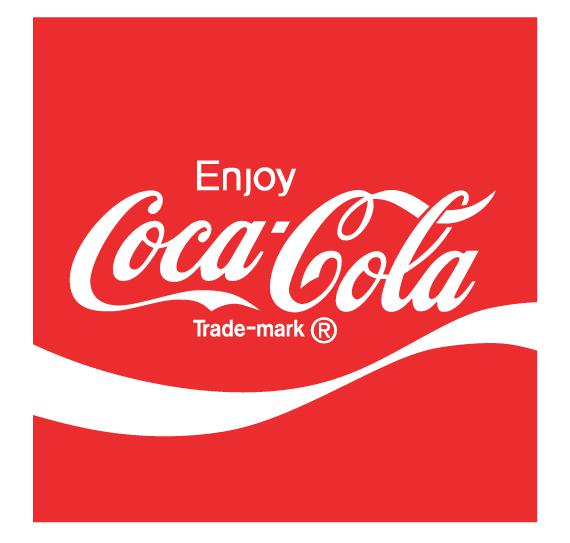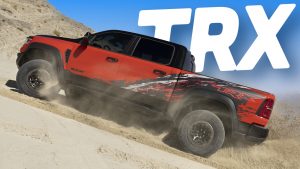Yesterday, when I was writing about Bentley’s logo re-design, I used the Ford logo as an example of just how long-lived automotive brand logos could be; remember, Ford has been using essentially the same logo for 116 years. That little fact reminded me about that one time that Ford at least considered changing their storied logo, and the creator of that unselected new logo was one of the greatest graphic designers of all time: Paul Rand.
Paul Rand, definitely not to be confused with Rand Paul, was the designer of such famous logos for companies as diverse as Cummins, Colorforms, the famous IBM logo, the NeXT logo, and even the now-infamous Enron logo. The man was one of the best logo designers ever, so it seems reasonable that if there’s anyone Ford would have approached about a logo update in the mid-1960s, it’d be Paul Rand.
We should talk for a moment about the Ford logo, before we really look at the updated version Rand proposed; the Ford logo, so associated with that company now, started out as really kind of a generic and expected logo of its era. Let’s take a look at it:

That ornate script was quite common for logotypes of the era, and you can still see evidence of this trend in some logos that were first crafted in the early 1900s and, somehow, stuck around all this time, unchanged. I can think of two massive companies that have logos that fit this description, and I’m pretty sure you’ve heard of them:

Coca-Cola, makers of New Coke, has a logo that uses a script quite similar to Ford’s. What is essentially that version of Coke’s logo is from 1903. In 1909, another very famous company trademarked this logo:

General Electric, makers of the LMS100 Aeroderivative Gas Turbine and like, a snacktillion clock radios, is a bit different but uses the same general concepts of ornate script text forming the logotype.
If we’re honest, the Ford logo is an old, very outdated logo design, and one that didn’t really have a lot of thought put into it at the time, mostly just following the trends of the era. It’s become something iconic, though, and that has to be respected.
Rand did respect that, and I think the logo he created for Ford manages to reference and pay homage to the original, while updating the design significantly. Let’s take a look at it:

All of the same, expected elements are still present, just streamlined and tweaked. The Ford name is still script, still suggests the same sort of ornate quality, but now cleaner and more modern feeling. The white border around the logo remains, but is now integrated into the typography in a seamless and elegant way.

The blue oval of the logo has been altered into a sort of pill shape, still suggesting an oval, but avoiding the pitfalls of ovals, which Rand described in the document that introduced and explained his design choices:
“The oval shape in which the signature is housed is not distinctive; it is merely another oval which is not unique to any one time or period. It is a common geometric figure, found in nature in such things as almonds, eggs, and faces.
In spite of its geometric origin, the oval (or ellipse) is a graphic device which is difficult to use. It is not visually stable, in that it seems to wobble back and forth. Further, it may be misread as a circle in perspective, creating a conflicting visual plane between signature and frame.”
That same book-sized document included a lot more explanations and advocacy for that new logo, including detailed breakdowns like this:
“The salient features of the proposed Ford house mark are:
- the emphatic F
- the elongated oval frame
- the upper and lower case
- the slanted letters
- the break in the o
- the o, r and d ligatures
These features, basically, are also distinguishing characteristics of the present Ford mark, but in the proposed version they have been translated into contemporary visual terms. This has been achieved by substituting an even stroked letter for the Copperplate script (the chief distinction of which is a marked contrast between thick and thin strokes). Further, the design adheres generally to the “word form” of the original.”
Personally, I really like this take on the Ford logo; I always found the original Ford logo sort of fussy, and this retains the key characteristics while recasting it into a much bolder and cleaner design.

The big pitch book shows the logo in various contexts, like on the side of that truck up there, and on ship smokestacks:

…and I think it works well in these large-scale contexts, as well as on signage:

It also works well on letterheads and business cards, demonstrating a flexibility of scale that’s no easy feat for a logo.
I think this would have worked great for Ford; and I think between the ’50s and ’70s there was a real push at Ford to find something more modern, as in this period the Blue Oval was used less and other simplified not-quite-official logos like wide-spaced F O R D chrome badging was used and simpler logos like the one used on British Ford escorts of the late ’60s:

Still, despite what seemed to be a latent desire and a very well-realized logo concept from a design superstar, Ford decided to stick with their old standby.
Maybe this was the right call, but I still can’t help but to imagine what if, and I still really like Rand’s 1966 proposal. Maybe they still have it in a vault somewhere, and are just waiting for the right time to spring it. That’d be pretty exciting, at least for us design geeks.









As a design nerd Cummins employee, I came across this years ago on Paul Rand’s site. Not only did Rand design the company’s current logo, but also that of the city of Columbus, IN (the ‘Dancing C’), as well as the ritzy neighborhood of Tipton Lakes in Columbus. He also proposed a logo in the ’60s which was an update of the black and yellow cross Cummins used before the big C, but it was not adopted:
Cummins | Paul Rand: Modernist Master 1914-1996
Side note: I have an eBay alert for interesting Cummins-related items, and recently was able to snag some original marketing proposals; one of which was a playing card design from Rand Design.
I also work in a plant designed by Roche-Dinkeloo in the late ’60s which was part of a MoMA exhibition on modern architecture that year.
I see a guy crawling out of his wheelchair, also the vague semblance of a face-but mostly the wheelchair
I love Paul Rands work, except this.
You know what’s crazy is that the current logo was designed by Massimo Vignelli in 1966. Yeah, the (good) subway map guy , as well as the American Airlines, Bloomingdale’s, and Knoll International logos.
The funny thing is thing about the Ford logo is that after looking at it for a minute, it stops looking like letters, the longer you look the weirder it gets. What’s that tentacle on the F?
Another fine example why my subscription here is well deserved. Thanks JT.
( I had a Foid Mondeo once and it was an amazing car)
Question – has the background always been blue? A neighbour of mine just brought home an Everest Tremor, in a very fetching grey, but the logo is black – every happened before? https://media.drive.com.au/obj/tx_q:70,rs:auto:1600:900:1/driveau/upload/cms/uploads/590eb93a-1492-5ee0-84d9-fb8df7650000
I think it might have been black back in the 1910s maybe, back when the corporate logo usually spelled out Ford Motor Company as the main part of the design?
The “r” is a problem. I’m guessing he became married to his decision that the horizontal cross on the cursive “F” must not be violated, which he then realized made the “r” unreadable. His bandaid was the upside down ballsack on the lead-in to the “d”. I’m not a graphics professional, but I bet a cardinal rule is never resort to a ballsack fix.
I loved the first two records by Ballsack Fix, but once the hammer dulcimer player left it all went downhill.
Those two Escorts are from the mid to late seventies
No
They couldn’t use it because it looks like someone getting spitroasted. I would love to know which executive took one look at this and said “no,” probably with no explanation.
With all due respect to Mr. Rand, at first glance it says Toro. At second glance it says Food.
I see Foid. What I dont see is Ford. But I’ve always hated Ford’s actual logo too.